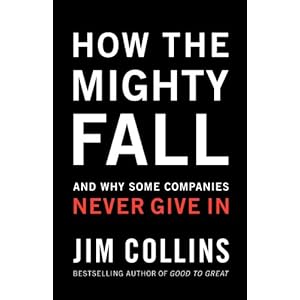Delivering Happiness; Enterprise Rental Cars Knows it’s About Doing a Number of Little Things, Consistently Well
Delivering happiness to your internal and external customers is not about just doing one big thing very well. Market leaders understand delivering happiness is about intimately understanding your customers and your market and consistently doing a number of little things exceptionally well.
Delivering happiness is the “golden rule” in action.
This week my work brought me to Chicago. As I discussed in a previous post about the buying experience as a differentiator , my preferred rental car company is Enterprise Rental Cars because of the amazing expertise I had at their Denver location.
I arrived at the Chicago airport, retrieved my checked bags and I was off to the rental car shuttle bus location. When I arrived I was happy to find the Enterprise bus waiting and I quickly boarded. The driver helped me with my bags and provided me a map to help me return the rental car when my trip was over. Another bus arrived and we were quickly off to the rental car parking lot. On the trip the driver (just like Denver) said “we will be arriving at your car in approximately 12 minutes”. As we drove the driver offered to provide us directions if we needed them. The driver radioed “we have two customers approaching and we are two minutes out”…great, I wonder if they will greet us when the van rolls up like Denver?
Sure enough, we were greeted by professionally dressed associates waiting for us. They introduced themselves and invited us inside. As I made my way to the counter, I was offered a cold water to drink. (How did she know I was so thirsty)? We quickly started on the paperwork and she asked how my flight was. Interesting, this is when Dollar or Hertz is typically trying to sell me a GPS rental or insurance, and she seemed to genuinely want to know about my day…
The reservation was pulled up quickly and she led me outside to pick out my car. I chose a small Kia and she walked around the car with her clipboard inspecting the car for damages with me. Again, how nice as this is my job with other companies and it never seems to fail I miss something. She asks about gasoline and insurance packages, but in a way as if she was concerned about my overall service experience and not like she was receiving a sales spiff like I have experienced with Thrifty and other rental car companies. Again she asked if I needed directions and she drew on my map the route to my hotel. She too offered me a map for returning the rental car and circled the directions I would use based on the location of my hotel in Shamburg. She quickly handed me my paperwork and said; “you will need to show this paperwork and your drivers license to the guard at the gate when you leave”. How did she know? How did she know one of my (many) travel pet peeves is if you need to see my drivers license again when I leave your lot, tell me. Don’t wait until I am in the driver’s seat, seat belt fastened and now having to retrieve my wallet and license again. Awesome, it’s like they shadowed me for the past 26 years of traveling and know each of my needs.
Another smaller irritant if you will is finding a radio station I like. Not a big deal mind you, but I often find myself trying to find a station , as I am driving at night in a strange place, trying to follow my Google Maps directions while keeping my eyes out for the right exit signs. When I sit behind the wheel of my Enterprise Rental car I look up and there, hanging from the rear view mirror is a list of radio stations…again how awesome.
After my work was completed I followed the circled directions and quickly found the rental car lot for my car return. When I arrived I was directed to rental car returns and found three people, professionally dressed again, waiting to help me. I would say from the time I pulled in, to the time I was back on the bus to the terminal was no more than 3-5 minutes. Again…awesome! They must know that travelers on their way home just want to get home. We seem to lack patience even more so on the return home than when we arrive and waiting in lines to drop off a rental car is not something we want to do.
Enterprise Rental Cars is in the delivering happiness business and they again reinforced my loyalty based on an amazing overall buying experience.
To deliver happiness you must intimately understand your buyers and not rely on your gut and intuition.
The test if you are truly committed to delivering happiness is the repeatability of the overall service experience.
Market leaders identify customer needs and build repeatable processes and procedures that insure a quality experience each interaction.
Market leaders committed to delivering happiness also instill a passion in their team members that is seen in authentic individualized service that reinforces the overall passion to serve.
So how about your team?…
Do you choose to deliver happiness to your internal and external customers?
Is your customer experience the same in Denver as it is in Chicago, Cleveland, or Miami?
Do you have processes and procedures in place to insure you consistently deliver happiness? (Market leaders do)
How can you instill a passion to deliver happiness in your organization?
Just as Enterprise Rental Cars has taken what historically was a matter of fact exchange of service in renting a car to an opportunity to deliver happiness, you can too. You too can get to know your buyers, your market and identify all those little opportunities to serve them that often cost very little but have a huge impact. To do so you need a culture passionately committed to the overall customer experience and an intimate knowledge of your buyers, their needs, and frequent problems.
Oh…as a side benefit, when you passionately deliver happiness customers are forgiving when things go wrong. When I arrived at my hotel I noticed my automatic door locks and truck release did not work. Given how many times I was in and out of the car and trunk over the weekend this would have normally been something that irritated me and tainted my overall buying experience. Since so many other parts of the buying experience were amazing I found the door and trunk release not working not a major problem. I was more forgiving of those inevitable occurrences that go bump in the night than I would have been having rented a car else ware.
Are you in the delivering happiness business?
If not now is as good a time as any to start!










